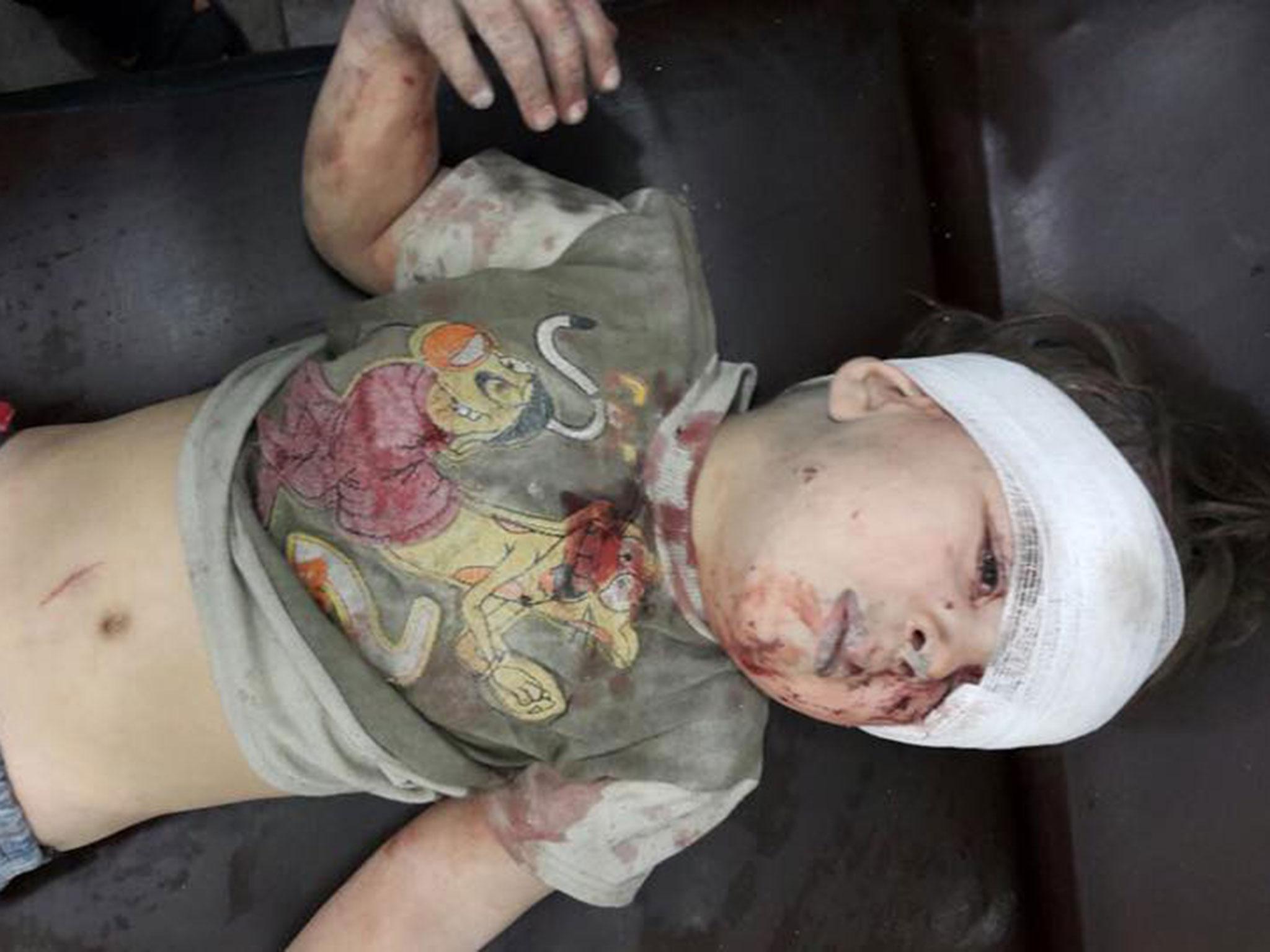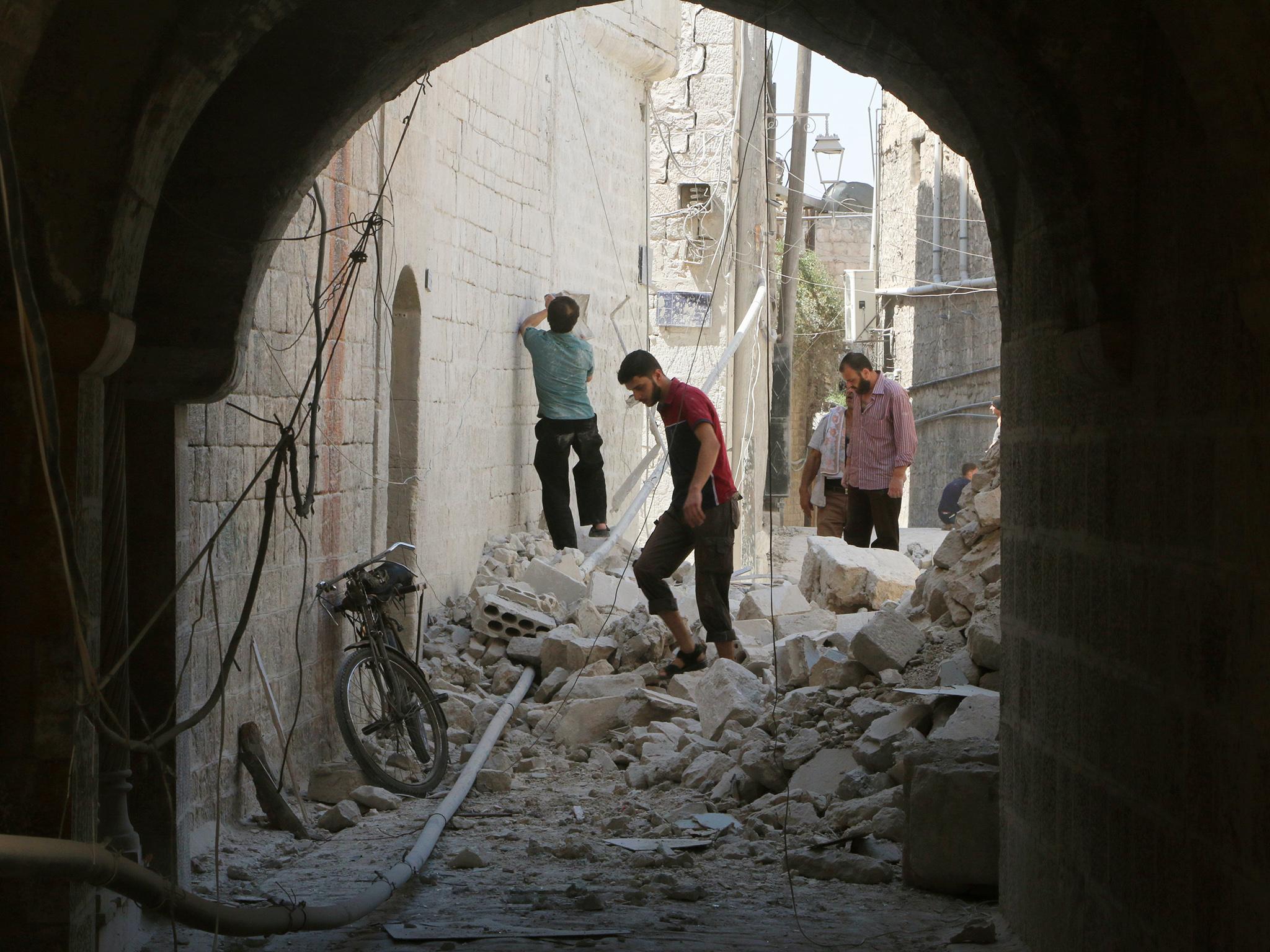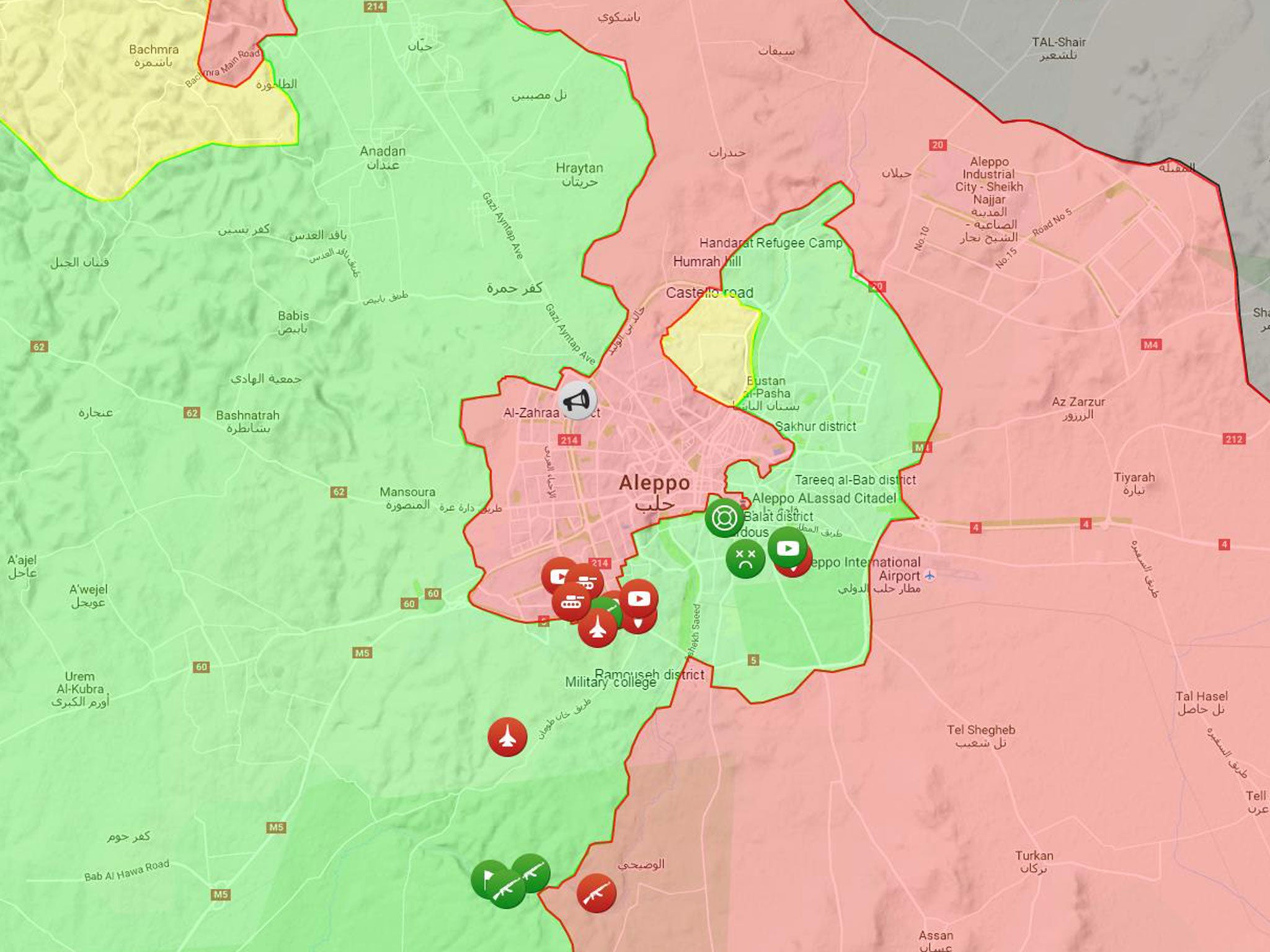Aleppo boy: Omran Daqneesh and family survive devastating air strike but face uncertain future as fighting continues
Omran, his parents and siblings survived the attack but several other children were killed
Your support helps us to tell the story
From reproductive rights to climate change to Big Tech, The Independent is on the ground when the story is developing. Whether it's investigating the financials of Elon Musk's pro-Trump PAC or producing our latest documentary, 'The A Word', which shines a light on the American women fighting for reproductive rights, we know how important it is to parse out the facts from the messaging.
At such a critical moment in US history, we need reporters on the ground. Your donation allows us to keep sending journalists to speak to both sides of the story.
The Independent is trusted by Americans across the entire political spectrum. And unlike many other quality news outlets, we choose not to lock Americans out of our reporting and analysis with paywalls. We believe quality journalism should be available to everyone, paid for by those who can afford it.
Your support makes all the difference.The family of a young Syrian boy, whose photo has become a symbol of the suffering endured by civilians living under relentless bombardment in the country's brutal civil war, have been pulled alive from the rubble of their home.
When five-year-old Omran Daqneesh was filmed in an ambulance on Wednesday evening, covered in dust and blood from a devastating air strike, the fate of his parents and siblings was unclear.
He sat alone in dazed silence dwarfed by an orange chair, trying to wipe his hands clean on the plastic, in harrowing images that have provoked outrage across the world.

Rescue workers described how they had pulled the little boy from his destroyed family home after it was hit by the latest round of bombing in rebel-held areas of Aleppo.
Mahmoud Raslan, who photographed Omran, said volunteers formed a human chain in attempts to find survivors.
“We were passing them from one balcony to the other,” he told the Associated Press, saying he carried three lifeless bodies before being handed the little boy.
Mr Raslan rushed him to the ambulance, which transported him to a hospital codenamed 'M10' to be treated for a head injury.
Doctors reported eight people killed in the strike, including five children, but Omran’s family was not among the victims.
His three siblings, aged one, six and 11, as well as his mother and father, were pulled injured but alive from their partially destroyed block of flats.

“We sent the younger children immediately to the ambulance, but the 11-year-old girl waited for her mother to be rescued. Her ankle was pinned beneath the rubble,” Mr Raslan said.
The building has since collapsed leaving the Daqneesh family homeless, and rescue workers said they worked until 5am to dig victims out of the ruins.
Charities say Omran and his family now face an uncertain future, as Aleppo continues to be the focus of battles and bombardment, with no aid deliveries so far able to enter rebel-held areas.
Save the Children said its partners have had ambulances hit by air strikes, on top of the numerous medical facilities damaged and destroyed.
Kirsty McNeill, director of advocacy, policy and campaigns at the charity, said the photo of Omran has “bought home the horror of life in Syria" with an impact likened to harrowing images of three-year-old Aylan Kurdi, who drowned trying to reach safety in Greece last year.
“Yesterday one of our partners sent us a photo of another little boy,” she added.

“They had taken him to hospital following an airstrike, wearing special traditional Aleppo clothes that children wear for celebrations like birthdays.
“His gold and velvet jacket was ripped open, a bloody bandage on his head.
“They took him to hospital – but he died of his injuries. Our partner said that the boy 'turned from a future dream for his parents into a dead body – they only kissed him a goodbye kiss and that’s it'.”
Ms McNeill said the boy was one of dozens of children known to have been killed in Aleppo in the past week alone, with many more dying in homes and schools across Syria.
“We urgently need a 48 hour ceasefire… but that is not enough – we must find a way to bring the siege and bombardment of civilians in Syria to an end,” she added.
Doctors in Aleppo use code names for hospitals, which they say have been systematically targeted by Bashar al-Assad’s forces, leaving many patients too frightened to attend.
The city, which is split between regime and rebel control, has been at the epicentre of continued battles and bombing despite successive attempts at ceasefires.
Regime forces and their Russian allies insist they are targeting “terrorists” but humanitarian groups have reported hundreds of civilian deaths on both sides, with rebels launching rockets and shells over the border.
Opposition-controlled areas of Aleppo were shut off by government troops and militias for several months earlier this year, with reports of starvation and disease in a humanitarian “catastrophe” caused by the siege.
Aid convoys have not been able to access the city since, with fighting continuing as a coalition of Islamist militants including the former al-Qaeda affiliate Jabhat al-Nusra try to open up a corridor out of besieged areas of the city.
On Thursday, the United Nations’ special envoy for Syria ended a meeting on humanitarian access after just eight minutes, saying it made “no sense” to plan aid deliveries when they would not be let into the city.
Staffan de Mistura demanded an immediate 48-hour ceasefire, calling for a “gesture of humanity from both sides”.
Mark Schnellbaecher, from the International Rescue Committee, said the Syrian civil war had so far caused at least 400,000 deaths and left 13.5 million people in need of aid.
He added: "Last year it took the shocking image of three-year-old Alan Kurdi to finally wake the world up to the reality of the refugee crisis. Today, the image of Omran is again stirring people worldwide to demand an end to the conflict."

Join our commenting forum
Join thought-provoking conversations, follow other Independent readers and see their replies
Comments